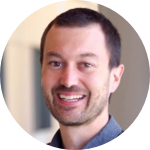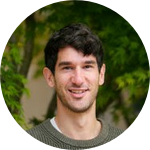About This Project
The enzyme rubisco catalyzes the first step of carbon assimilation in photosynthesis and limits plant growth under many growth conditions. The aim of our work is to understand sequence-structural constraints on rubisco with the long-term goal of developing superlative variants that can improve photosynthesis in plants.
Ask the Scientists
Join The DiscussionWhat is the context of this research?
The enzyme rubisco catalyzes the first step of carbon assimilation in photosynthesis. Despite the massive flux of CO2 passing through this active site over billions of years, extant rubisco has slow kinetics, is prone to off-target activity and limits plant photosynthesis under many growth conditions. The aim of our work is to understand sequence-structural constraints on rubisco with the long-term goal of developing superlative variants. To this end, we have developed an E. coli platform for high-throughput assay and have carried out the first deep mutational scan of rubisco (Prywes et al. bioRxiv 2023). Our data reveal that systematic manipulation of enzyme kinetic parameters may be possible. We propose two approaches for engineering novel Rubisco enzymes with enhanced properties.
What is the significance of this project?
Rubisco is the key enzyme of the carbon assimilation reactions in a plant and is known to limit photosynthesis. It is thus hypothesized that improvements to photosynthesis could dramatically increase crop yields. Prior engineering work on rubisco has been limited by the low throughput of assays. We believe that our assay, coupled with new machine learning tools, will enable a thorough and, possibly, productive search for superlative variants. If successful, these results would be of significant interest to the biochemical community but would have obvious application in crop plants.
What are the goals of the project?
The goal of our work is to undertake a rigorous evaluation of the sequence-function landscape available to the enzyme rubisco to speed up the process of biological carbon fixation. This will lead to new biochemical insights and, possibly, the construction of novel rubisco variants which would have utility in planta. In work beyond the scope of this grant, our lab is building plant synthetic biology tools for rubisco validation and, if successful here, we will test out winners in model plants to clarify questions of photosynthetic performance and yield.
Budget
n/a
 Project Timeline
Project Timeline
n/a
Aug 31, 2024
Project Completion
Meet the Team
David Savage
Dave is an Associate Professor of Biochemistry, Biophysics, and Structural Biology in the Department of Molecular & Cell Biology at the University of California, Berkeley. Dave was born and raised in rural Iowa. He continues to help manage his family’s farm, which was recognized in 2010 as an Iowa Heritage Farm. Dave attended Gustavus Adolphus College, where he earned a B.A. in Chemistry and minored in Computer Science. He received his Ph.D. in 2007 from UCSF for his work on membrane protein structure determination with Robert Stroud. From 2007 to 2011, Dave was a Life Sciences Research Foundation fellow with Pamela Silver in the Department of Systems Biology at Harvard Medical School.
Research in the Savage Lab focuses on understanding and engineering two of the most compelling biochemical systems found in nature: CO2 fixation and genome editing enzyme machineries. Ultimately, this works seeks to develop enabling genome editing technology and apply it for improving photosynthetic CO2 assimilation in plants. For this work, Dave’s research has been recognized with the DOE Early Career Program Award, an NIH Director’s New Innovator Award, an Alfred P. Sloan Research Fellowship, and he was selected for the 2018 “Future of Biochemistry” issue by ACS-Biochemistry. In addition to this research, Dave is a co-creator of the Cold Spring Harbor Laboratory course on synthetic biology, a founding member of the Engineering Biology Research Consortium, and a co-founder of Scribe Therapeutics.
Noam Prywes
Noam trained as a chemist with Jack Szostak working on the origin of life and the development of early replicating systems. During this training he studied the molecular evolution of RNA and the chemistry underlying replication in a pre-cellular world. As a postdoc Noam moved to the Weizmann Institute to study carbon metabolism in Ron Milo’s lab in the hopes of finding ways to improve photosynthetic carbon capture through protein engineering. Since rubisco is both the first step and the bottleneck in the Calvin-cycle, Noam developed biochemical assays to study rubisco in higher throughput. After moving to UC Berkeley to work with Dave Savage, a protein engineering expert, Noam continued to work on rubisco in even higher throughput by using a rubisco-dependent E. coli strain to generate a comprehensive map of rubisco mutants.
Project Backers
- 0Backers
- 0%Funded
- $0Total Donations
- $0Average Donation

